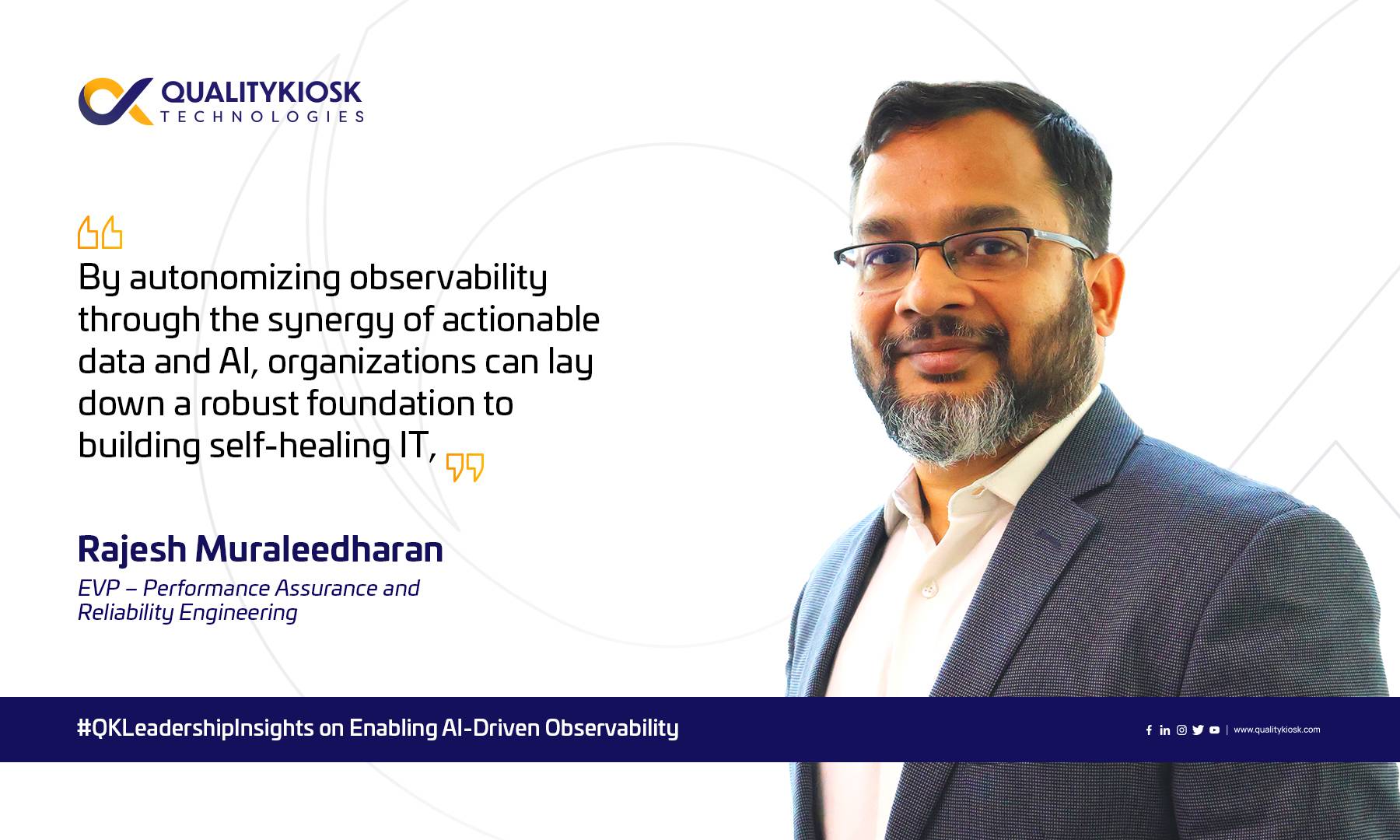Democratizing Observability with AI: Transforming IT Operations for Self-Healing Systems
In today’s intricate digital landscape, the orchestration of even the most basic applications relies on a sophisticated network of distributed IT components. The advent of microservices, serverless computing, and Kubernetes has undoubtedly enhanced business agility and cost efficiencies. However, this evolution has simultaneously amplified the operational complexity of systems, presenting formidable challenges in security, performance, and business continuity management.
Challenges of Traditional Observability in Modern IT
Traditionally, observability methods were effective in breaking the glass ceiling and revealing the intricacies behind operational bottlenecks. However, as the digital ecosystem evolves towards distributed IT, these conventional approaches are gradually becoming inadequate. By restricting tools and data to specialized teams within diverse and distributed IT systems, traditional observability approaches inadvertently create data silos. These silos, in turn, hinder enterprises from gaining holistic visibility into their ecosystems, impeding collaboration and resulting in missed opportunities.
The limitations of traditional observability in modern IT can lead to:
-
Delayed Mean Time to Identification and Resolution
The inherent delays in identifying and resolving issues can have a cascading impact on system performance.
-
Reduced Adaptability and Agility
Confining observability to specialized teams limits the adaptability and agility of the overall IT infrastructure, hindering its responsiveness to changing requirements.
-
Increased Security Vulnerabilities
The evolving threat landscape requires continuous monitoring and rapid response, which traditional observability may struggle to provide.
-
Subpar Performance
The inability to gain comprehensive visibility into system performance can result in suboptimal operational outcomes.
-
Diminished Customer Experiences
Ultimately, the limitations of traditional observability can lead to a decline in the quality of user experiences.
Democratizing Observability: Futureproofing Operations
Democratizing observability is a strategic approach that involves empowering teams across the organization to access and leverage observability data, tools, and troubleshooting capabilities. This shift aims to manage the complexity of distributed IT while harnessing the multitude of benefits it offers.
Key Benefits of Democratizing Observability
1. Faster Time to Resolution
Enabling self-service IT empowers IT and non-IT teams to identify and resolve issues promptly. This not only enhances system uptime but also conserves valuable time and resources.
2. Improved Collaboration
Breaking down silos by providing unified access to data fosters holistic visibility into performance and operations. This, in turn, enables enterprises to align their efforts effectively towards common business goals.
3. Enhanced Agility
Democratization of observability allows organizations to track and evaluate application performance and user interactions. This newfound visibility empowers enterprises with the adaptability to proactively meet changing customer demands and drive continuous improvement.
4. Data-Driven Decision Making
Providing complete transparency across IT, observability democratization supports informed decision-making for effective risk mitigation and secured operations.
Artificial Intelligence as an Enabler for Democratizing Observability
While democratizing observability holds immense potential, the implementation can be daunting due to the comprehension and analysis of observability data. Enter artificial intelligence (AI), with its generative, predictive, and automation capabilities, offering a potent solution to overcome these challenges.
Use Cases of AI-Powered Observability
-
Automated Data Collection
AI can be leveraged to continuously collect, store, and process observability data from diverse IT sources to a centralized location. This eliminates extensive manual efforts and provides real-time data for analysis and informed decision-making.
-
Data Analysis and Comprehension
AI’s generative capabilities present the opportunity to uncover actionable insights seamlessly from extensive observability data. Integrated into observability, SRE (Site Reliability Engineering), business and DevOps teams can unearth invaluable insights into system health, expedite issue identification and resolution, and receive practical recommendations for optimizing IT performance, security, and reliability.
-
Anomaly Detection
AI enables enterprises to leverage historical and current observability data to predict potential anomalies and issues before they occur. Beyond preventing downtime, AI provides contextual insights into predicted anomalies, helping business, development, and operation teams understand the potential impact and take necessary mitigation measures.
-
Capacity Planning
AI’s predictive and analytical capabilities streamline capacity planning and optimize resource utilization. By analyzing current and historical usage patterns, AI accurately predicts evolving resource demands, helping enterprises prevent capacity bottlenecks, optimize cost efficiencies, and proactively plan to accommodate future growth.
-
Automated Incident Response
AI not only automates routine incident management tasks such as root cause analysis, triggering alerts, and initiating corrective actions but also adapts and learns from past incidents. This adaptive learning capability allows AI to proactively prevent future occurrences, moving towards a more self-healing IT environment.
Charting the Path Towards Self-Healing IT
The aspiration for self-healing IT systems represents an ambitious endeavor aimed at automating the detection, diagnosis, and remediation of IT issues, minimizing human intervention and maximizing system uptime. While achieving fully self-healing IT remains a long-term goal, democratizing observability with AI lays the essential groundwork for realizing this vision.
Democratization with AI serves as the cornerstone of self-healing IT. It cultivates a culture of data-driven decision-making, empowers users to identify automation opportunities, and establishes a robust data foundation for self-healing algorithms. As AI continues to evolve, its role in democratizing observability will only grow, paving the way for a future where IT systems can autonomously adapt, heal, and optimize themselves.
In conclusion, the synergy between democratizing observability and AI is not just a contemporary trend but a strategic imperative for organizations navigating the complexities of the modern digital landscape. By embracing this transformation, businesses can fortify their IT operations, enhance resilience, and embark on the journey towards self-healing IT systems
About the Author
A performance assurance expert with over 20 years of experience, Rajesh has been at the forefront of empowering enterprises with customized performance and reliability engineering solutions. Harnessing a data-driven approach to tracking the robustness of digital ecosystems, optimizing operations, refining processes, proactively planning capacity, and predicting performance, Rajesh has helped large organizations across industries fine-tune numerous platforms and software applications for enhanced system efficiencies and customer experiences.





